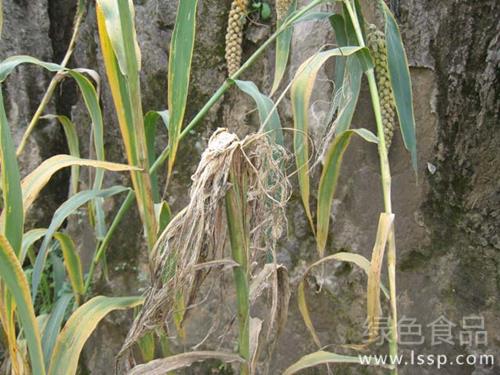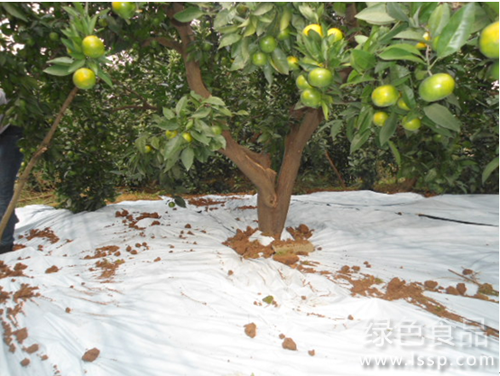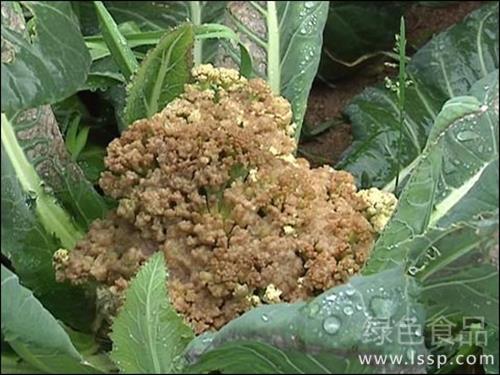Prevention and treatment of mildew on the back of leaves and withered millet at the tip of leaves
White disease is one of the most important diseases of millet. Millet can occur from seedling stage to mature stage. After self-planting buds or young tillers were infected, millet showed different symptoms in different growth stages and different organs, so they got different names: "bud rot", "gray back", "white tip", "gun stick", "white hair" and "hedgehog head". In addition, local infection can cause leaf spots.

Millet white disease
Occurrence regularity: millet white disease pathogen overwintered with oospores. Under natural conditions, there are three sources of primary infection: first, when the diseased tissue in the field is broken, the oospores are scattered in the soil to carry bacteria; second, the infected millet is fed to livestock or retting manure to carry bacteria; third, when the healthy and diseased plants are threshed together, the seeds are infected with oospores. Among them, soil bacteria is the main primary infection source of the disease.
There were significant differences in resistance to white disease among different varieties of millet, such as early and deep sowing, severe disease, appropriate late sowing, shallow sowing and mild disease. All the factors that are not conducive to the unearthing of seedlings are conducive to the occurrence of diseases. In addition, the white disease caused by warm and humid re-infection is serious.
Control strategy: seed treatment is given priority to, agricultural control is secondary, and disease-resistant millet varieties are selected.
1. Chemical control: 35% metalaxyl seed mixing agent is used to mix seeds directly with 0.2-0.3% millet seed amount or wet mixing with water, or 50% copper wettable powder is mixed with millet seed amount 0.3-0.4%, 64% alaxyl manganese-zinc wettable powder is mixed with millet seed quantity 0.4-0.5%. Sow seeds immediately after mixing.
2. Agricultural control: reasonable rotation can effectively prevent millet white disease, two-year rotation in mild disease areas and three-year rotation in seriously diseased plots. Rotation with non-host crops such as wheat, legumes, potatoes, etc. Application of aseptic fertilizer and seed treatment. The effect of large area rotation is better. Pay attention to soil moisture conservation, sowing at the right time, and appropriate shallow sowing, so as to promote early and strong seedlings and reduce the chance of infection. In addition, pulling out the gray back and white tip diseased plants can effectively prevent the occurrence of millet white disease in the second year, timely pulling, continuous pulling, whole plant pulling, successive pulling, pulling out the diseased plants before the oospores are scattered, pulling out the diseased plants out of the field and concentrated burning, not feeding livestock and retting fertilizer.
- Prev

Ensure high yield of citrus and high yield in the coming year seven points should be remembered in autumn management of citrus
Ensure high yield of citrus and high yield in the coming year seven points should be remembered in autumn management of citrus
- Next

Prevention and treatment of soft rot of falling cauliflower with rotten flower ball
Prevention and treatment of soft rot of falling cauliflower with rotten flower ball
Related
- Fuxing push coffee new agricultural production and marketing class: lack of small-scale processing plants
- Jujube rice field leisure farm deep ploughing Yilan for five years to create a space for organic food and play
- Nongyu Farm-A trial of organic papaya for brave women with advanced technology
- Four points for attention in the prevention and control of diseases and insect pests of edible fungi
- How to add nutrient solution to Edible Fungi
- Is there any good way to control edible fungus mites?
- Open Inoculation Technology of Edible Fungi
- Is there any clever way to use fertilizer for edible fungus in winter?
- What agents are used to kill the pathogens of edible fungi in the mushroom shed?
- Rapid drying of Edible Fungi

